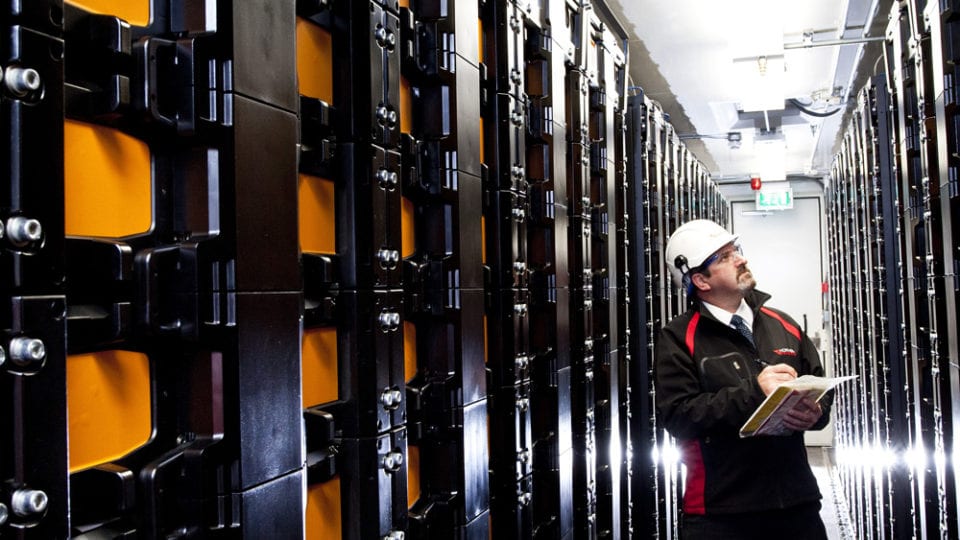NPG calls for collaboration on energy storage
Northern Powergrid has called on electricity distribution network operators (DNOs), regulators and industry partners to work together to define the future of network-scale energy storage.
22nd March 2018 by Networks

Speaking at two events across the country this month, senior team members from Northern Powergrid will address this hot topic.
“Energy storage has huge potential to change how the UK’s energy system works,” commented Patrick Ewin, policy and markets director. “The storage industry is growing rapidly and, in parallel, we are making the biggest changes to our power network since the 1970s. Evaluating how battery storage interacts with our network from household to utility level is a key priority for us as we seek to develop a truly customer-led distribution system. We welcome healthy engagement between DNOs, regulators and industry partners to present the best possible uses of energy storage on our network. Debate generated at events like those we are attending this week will be crucial to the advancement of this collaboration and the success of energy storage.”
One key area Northern Powergrid is looking at is the use of battery storage for increased resilience in areas that are susceptible to power cuts by nature of their geography – such as outlying coastal communities – and how to improve service for vulnerable people in these regions.
Northern Powergrid has a number of projects underway to develop understanding of the benefits that may be delivered by energy storage. In Darlington, it is operating a 2.5MW (5MWh) battery to maintain the electricity network at a stable frequency, providing balancing services to National Grid, and has also been providing services through the Winter to assist an energy supplier.
Northern Powergrid is also engaged in a trial project with home battery company Moixa that has seen batteries installed in 40 council owned homes in Oxspring village outside Barnsley. The trial is demonstrating how batteries can be used to manage peak solar output, reduce homeowner’s energy costs and avoid need for network reinforcement.
“The industry is making great strides in reviewing the best ways to incorporate energy storage into the operation of the network,” Jim Cardwell, head of innovation and trading, added. “We are very aware that getting the role of battery storage right now, in these early stages, is a sizeable opportunity for us to deliver significant service improvements for our customers. As such, we are considering how we might use this energy storage opportunity now to provide increased support to our most remote and technologically-vulnerable communities in the long-term.”
“Battery storage has the potential to make a real difference to the lives of people in many of our operating areas and in order to maximise the benefits for customers we need to make sure that storage assets are available for the network to call on, we think electric vehicles with vehicle-to-grid technology could be a particularly important part of this,” concluded Ewin.
Comments
Login on register to comment
Related content

Power
The future for vegetation management
Why networks should focus on data not trees to overcome the costly challenges involved in vegetation management

Power
An unprecedented opportunity for change
Why short interruptions will matter in RIIO-ED2 and how to address them.

Power
Time for less talk and more action on decarbonisation
Core "oven-ready" solutions to decarbonising heat and transport exist today and should be implemented without delay, says WPD's future power networks expert.
Related supplier content
![‘Learning by doing’ on the road to net zero [test product]](https://networksonline.s3.amazonaws.com/products/images/3.jpg)
People & Skills
‘Learning by doing’ on the road to net zero [test product]
DSO director Andrew Roper discusses 'Learning by doing'

Power
Load patterns and lockdown: how Covid-19 is impacting electricity networks
Insights into dynamics on the low voltage network as the outbreak unfolds

Downloads
Protect electrical equipment from insulation failure
Insulation faults are a major cause leading to the eventual failure of electrical equipment. Partial discharge (PD) is a very reliable indicator of developing insulation faults. Regular PD testing allows users to detect and analyze PD activity